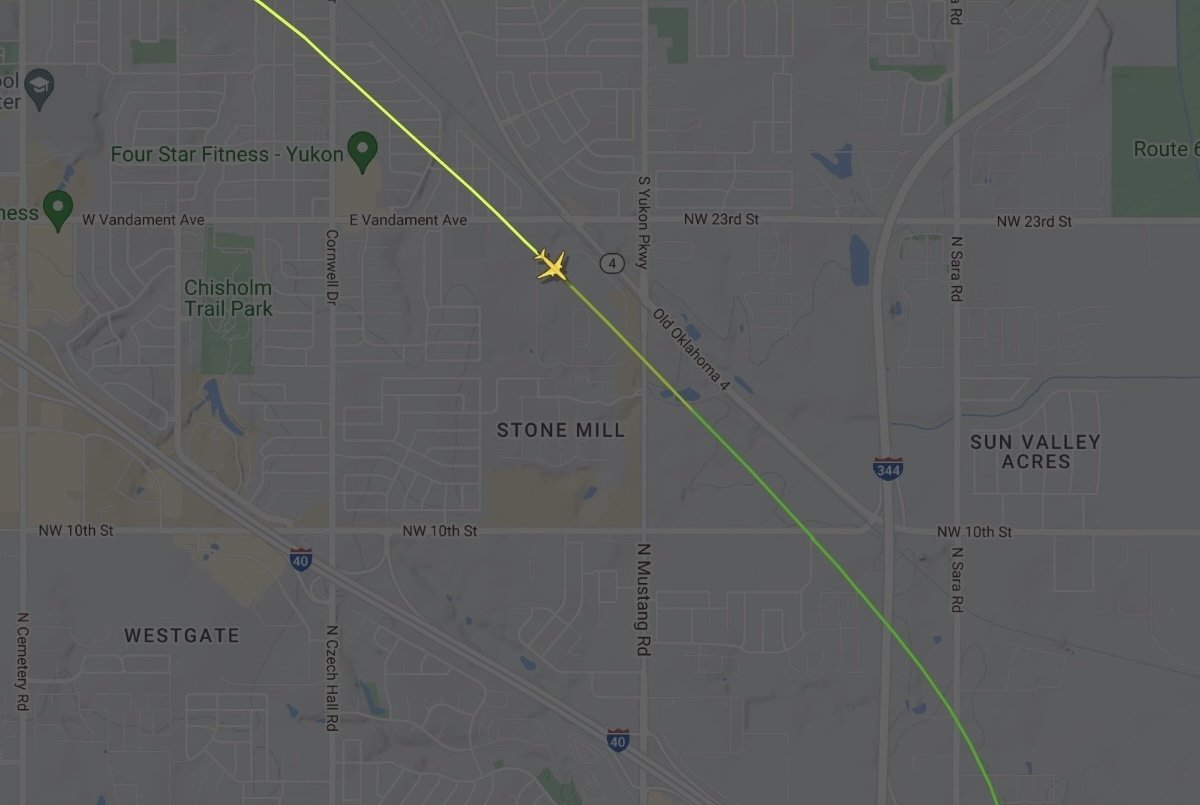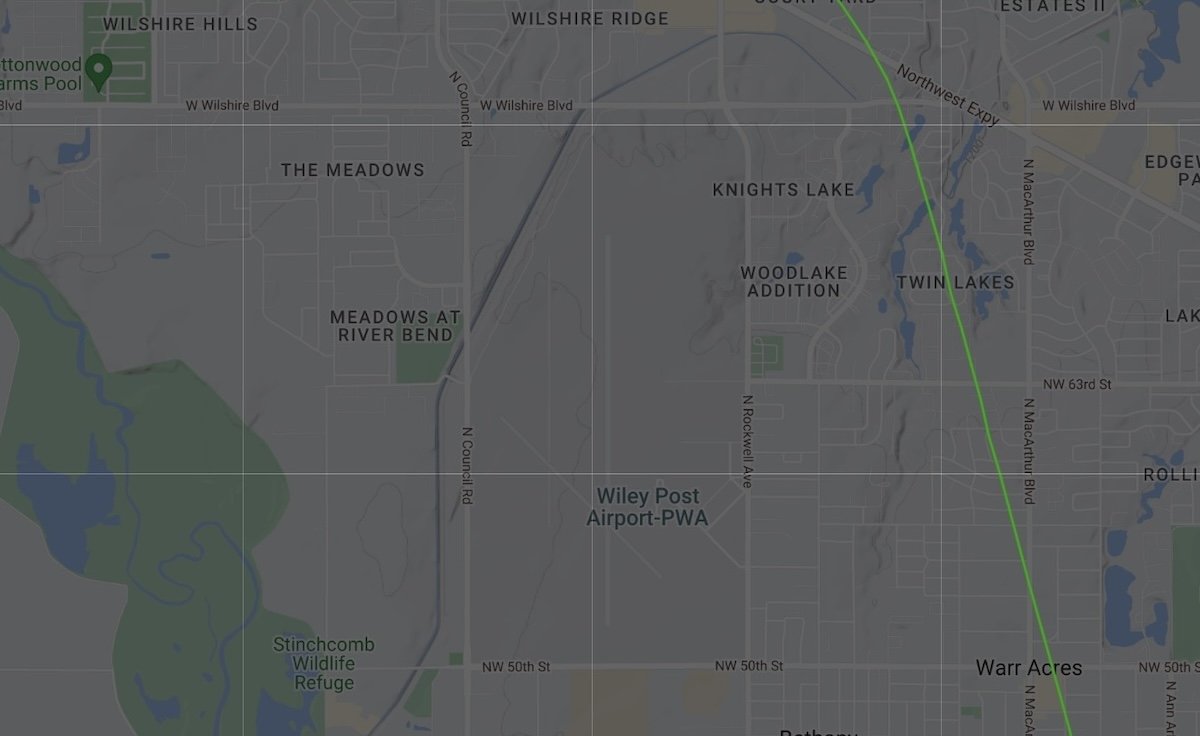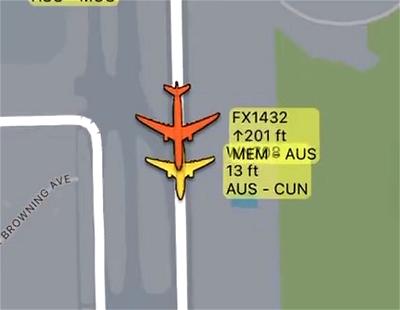The Federal Aviation Administration (FAA) is investigating yet another incident involving a Southwest Airlines Boeing 737. This incident is especially strange, since conditions were good, so one has to wonder what exactly was going on with the pilots.
In this post:
Southwest 737 pilots confused in Oklahoma City?
This incident involves Southwest Airlines flight WN4069 from Las Vegas (LAS) to Oklahoma City (OKC), which departed on Tuesday, June 18, 2024. The flight was operated by a six year old Boeing 737-800 with the registration code N8555Z.
The 986-mile flight was totally routine, until shortly before landing (this was just after 12AM, so at this point it was June 19). The aircraft was cleared for a visual approach to runway 13, and the pilots claimed to have the airport in sight.
However, while around nine miles from the airport, the aircraft descended all the way down to around 500 feet above ground level, while heading in the direction of the airport. Suffice it to say that this is way lower than an aircraft should be while that far out.
Based on air traffic control audio, the pilots didn’t even realize what they were doing, until the air traffic controller warned them, thanks to a low altitude alert in the tower:
Air traffic controller: “Southwest 4069, low altitude alert, you good out there?”
Southwest pilot: “Yeah, we’re going around, Southwest 4069.”
Air traffic controller: “You want to go around and come back for 13, or are you going to continue your approach?”
Southwest pilot: “Yeah, we’ll come back around for 17.”
Air traffic controller: “Okay, 17R?”
Southwest pilot: “Yeah, we’ll do that.”
To state the obvious, it’s not normal for a 737 to be at an altitude of just 500 feet, traveling at 128 knots (according to Flightradar24), nine miles away from the airport.
The plane ended up performing a go around, and landed safely on runway 17R several minutes later.

Below you can see a VASAviation video about the incident, which includes air traffic control audio.
This ended up being a big story in the Oklahoma City suburb of Yukon, where many residents were woken up and startled to hear such a big plane at such a low altitude in the middle of the night.
A Southwest spokesperson has issued the following statement:
“Southwest is following its robust Safety Management System and is in contact with the Federal Aviation Administration to understand and address any irregularities with the aircraft’s approach to the airport. Nothing is more important to Southwest than the safety of our customers and employees.”
What on earth happened here?
I’m fascinated to see what the FAA finds with its investigation into this incident. Usually when we see something like this, it’s easy enough to immediately say “oh, I see how that could happen.” For example, we recently learned of a terrifying Southwest 737 MAX incident in Hawaii, where pilots were battling awful weather, and it’s easy to make sense of how something could go wrong.
But in this case, you had clear skies and a visual approach, and the pilots claimed that they had the airport in sight. Yet while nine miles from the airport, they descended all the way down to 500 feet. Worst of all, the pilots didn’t seem to realize what happened until the air traffic controller asked if everything was okay.
Presumably this incident falls into one of two categories:
- The pilots didn’t realize they were at such a low altitude
- The pilots did realize their altitude and speed, and were preparing to land on something that wasn’t the intended runway
The latter scenario seems much more likely, since the plane seemed to be in a landing configuration based on the speed. And that raises the question… where did the pilots think they were landing? Did they mistake one of the roads or highways in the area for a runway, and were preparing to land there?

It’s interesting to note that Wiley Post Airport (PWA) is another nearby airport, which was closer to where they were. It has runways with the same orientation as Will Rogers World Airport (OKC), including runway 13 and runway 17R. While they were significantly closer to Wiley Post Airport than Will Rogers World Airport, they were already to the south of the former airport when this happened.

Over the years, we’ve seen some stories of aircraft landing on the wrong runway, or even on an airport taxiway. But almost landing in an area not even close to the airport is a new one to me…
Bottom line
A Southwest Airlines Boeing 737 had an “unconventional” approach to Oklahoma City Airport. About nine miles from the airport, the aircraft was at an altitude of 500 feet, traveling at a very low speed. The pilots claimed they had the airport in sight, and were performing a visual approach.
The air traffic controller got a low altitude alert, and asked the Southwest pilots if everything was okay. At that point they initiated a go around. This incident is now being investigated, and I’m curious to see what comes of this…
What do you make of this Southwest 737 incident in Oklahoma City?




Many pilots would not allow themselves to be put in the position the Southwest pilots put themselves in. Last leg of the flight day and landing past midnight a lot of pilots would not have requested a visual approach to a runway that is 2000 feet shorter then the main runways and doesn’t have a precision approach. Most pilots would opt for a visual approach to 17R or 17L and would have backed themselves up...
Many pilots would not allow themselves to be put in the position the Southwest pilots put themselves in. Last leg of the flight day and landing past midnight a lot of pilots would not have requested a visual approach to a runway that is 2000 feet shorter then the main runways and doesn’t have a precision approach. Most pilots would opt for a visual approach to 17R or 17L and would have backed themselves up by loading the ILS approach into the box and would use the autopilot too. Southwest’s pilots have a reputation for trying to get into and out of an airport as quickly as they can. Most of the time it works out, this night it didn’t.
Sort of shocks me as some airlines require at night to back up a visual approach with an instrument in the box. Heck, Lufthansa doesn't allow visual approaches at night (search YouTube for the ATC of a recent incident with LH at SFO where Norcal Approach got pissy they wanted an ILS and made them circle for long enough to have to divert to OAK for low fuel).
OKC runway 13 does have a...
Sort of shocks me as some airlines require at night to back up a visual approach with an instrument in the box. Heck, Lufthansa doesn't allow visual approaches at night (search YouTube for the ATC of a recent incident with LH at SFO where Norcal Approach got pissy they wanted an ILS and made them circle for long enough to have to divert to OAK for low fuel).
OKC runway 13 does have a RNAV/GPS approach. Around the time these guys were at 500 feet, they should have been about 4000 per the plate for that approach. Airline pilot blancolirio on YouTube walked through this as well.
Slight correction on the runway - this flight had been cleared for the visual approach to runway 13 (the full audio is on LiveATC). It looks like they were on the correct heading for the runway but obviously descending way too early.
Noel reads Omaat!
“THIS WEEK… I buzz an unsuspecting suburb.”
Keep rocking, Noel!
Yup. Appears to be a lower than ideal approach to 13. They got too low too soon.
/s ....maybe they should raise the min hr requirement to hold the ATP rating to 15,000 hrs. That should fix all the safety issues.
If it turns out the pilots were in fact heading for the wrong airport it wouldn’t be the first time for Southwest:
https://www.jacksonville.com/story/news/nation-world/2014/01/13/southwest-airlines-flight-lands-wrong-airport-0/15803176007/
It appears that Southwest has taken United's place in the number of pilot errors
Preach, brother
X (Twitter) is a joke: "The FAA is investigating an incident on a Southwest Airlines flight after a plane plunged to roughly 525 feet and came close to a high school during its approach into Oklahoma City." Plunged? Near a school? Really??
Wasn't there a similar situation where a B747 Dreamlifter (dedicated freighter for B787 program) got confused and landed at the wrong nearby airport.
Could it be that the Southwest crew got confused with the nearby Wiley Post airport while approaching Oklahoma airport? Also, pilot fatigue could play into this as it was just past midnight. How many legs had the pilots performed prior to the approach in question. Their body clocks could have been way off.